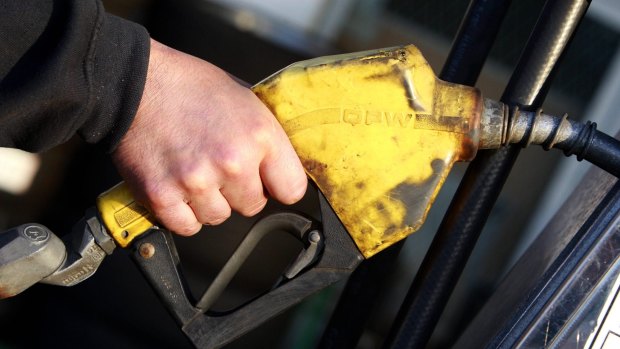By Shane Wright
There are more signs that price pressures on Australians are starting to ease with monthly inflation falling sharply through October.
The Australian Bureau of Statistics on Wednesday said inflation through last month fell to 4.9 per cent from 5.6 per cent in September. In October alone, the bureau said consumer prices dropped by 2.3 per cent.

A fall in petrol prices has helped deliver a larger than expected fall in the monthly measure of inflation.Credit: James Davies
Financial markets had been expecting inflation to slow to 5.2 per cent.
Taking out volatile items such as petrol, holiday travel, fruit and vegetables, underlying inflation also fell sharply in the month, dropping to 5.1 per cent. It had been at 5.5 per cent in September.
One of the biggest factors in inflation, rents, fell from an annual rate of 7.6 per cent to 6.6 per cent as the federal government’s changes to Commonwealth rent assistance started filtering through the property market.
In monthly terms, rent prices fell by 0.4 per cent after a 0.3 per cent increase in September.
The annual rate of inflation for food and non-alcoholic drinks increased to 5.3 per cent from 4.7 per cent, but in the month, prices were up by just 0.1 per cent.
Fruit and vegetable prices were up, in part due to a reduced supply of melons and bananas.
The acting head of the bureau’s prices statistics section, Leigh Merrington, said inflation was coming down.
“The 4.9 per cent increase is down from 5.6 per cent in September and below the peak of 8.4 per cent in December 2022,” he said.
Petrol prices are also starting to ease. The annual rate of inflation of automotive fuel was 19.7 per cent in September but this eased to 8.6 per cent in October.
Through October, prices fell by 2.9 per cent after jumping by 3.3 per cent in September.
Holiday travel and accommodation have been one of the factors driving inflation high over the past year.
But in October, prices dropped by 7 per cent, taking the annual rate of growth to 1.2 per cent. In December last year, the annual rate was 29.3 per cent.
The figures follow an appearance on Tuesday by Reserve Bank governor Michele Bullock in which she said Australians were unhappy with her and the bank for their string of interest rate increases.
Speaking in Hong Kong, Bullock said that despite the concerns of many, the nation’s households were holding up well in the face of much higher mortgage repayments.
“People are very unhappy. The cash flow channel works very quickly in Australia, and it’s very prominent,” she said.
“But what I’d like to highlight here is though, despite that noise, households and businesses in Australia are actually in a pretty good position. Their balance sheets are pretty good.”
Retail sales fell by 0.2 per cent in October as people wound back expenditure on everything but their grocery shopping.
At an annual rate, retail sales slowed to 1.2 per cent - the lowest rate, outside of the pandemic, since November 2010.
Spending on discretionary goods and services, a key indicator of the impact of interest rate rises, slowed again. Expenditure on eating out at cafes and restaurants fell for a second consecutive month.
Cut through the noise of federal politics with news, views and expert analysis from Jacqueline Maley. Subscribers can sign up to our weekly Inside Politics newsletter here.